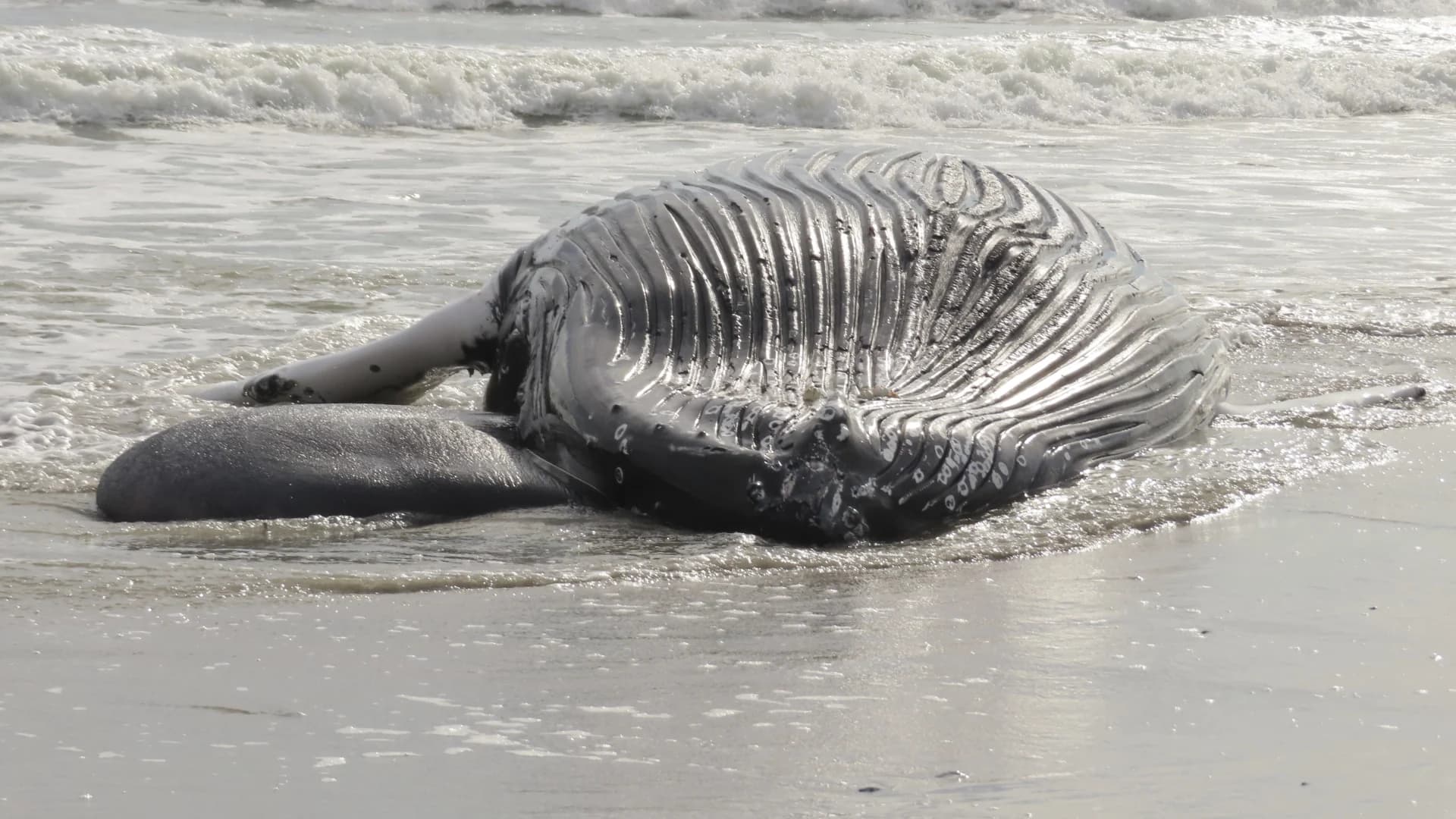More Stories

Federal environmental and energy officials moved Wednesday to quell a growing controversy over whether work done by the offshore wind power industry is killing whales in the northeastern U.S., saying there is no evidence this is happening.
In a hastily arranged briefing for reporters, the National Oceanographic and Atmospheric Administration, and the Bureau of Ocean Energy Management addressed a spate of whale deaths on the East Coast that some groups suspect may have been caused by site preparation work for offshore wind farms.
NOAA said there have been 14 whale strandings on the East Coast since Dec. 1, including humpback whales, which are common in the area, and some sperm whales, which are an endangered species.
The call came two days after the latest reported death, that of a humpback whale that washed ashore Monday on Assateague Island, Maryland. The death of that whale followed the deaths of seven whales in New Jersey and New York in a little over a month.
NOAA officials said they have been studying the phenomenon of humpback whales dying at elevated rates along the East Coast since January 2016. During that period, 178 of the animals have washed ashore dead between Maine and Florida.
Post-mortem examinations were able to be done on about half the animals, and of those, 40% showed evidence of “human interaction,” such as entanglement with fishing gear or being struck by vessels, said Lauren Gaches, a NOAA spokesperson. In other cases, the animals were too decomposed for an effective investigation.
In no case, authorities said, has a whale been proven to have been killed by offshore wind activity.
“I want to be unambiguous: There is no information supporting that any of the equipment used in support of offshore wind development could directly lead to the death of a whale,” said Benjamin Laws, deputy chief for permits and conservation with NOAA Fisheries Office of Protected Resources. “There are no known connections between any offshore wind activities and any whale strandings.”
The issue has become contentious since early last week when Clean Ocean Action, one of New Jersey's leading coastal environmental groups, held a press conference in Atlantic City with resident groups and opponents of offshore wind to call on President Biden to investigate the seven dead whales discovered in New Jersey and New York since early December.
They also called for a temporary pause on ocean floor site preparation work for wind farms until the cause of the deaths could be established — something New Jersey's Democratic governor, Phil Murphy, rejected.
Since then, other environmental groups and federal agencies have pushed back, saying there is nothing to link the deaths with survey work for offshore wind farms. On Tuesday, many of New Jersey's main environmental groups held a press conference to support offshore wind and decry what they called the “false narrative” that offshore wind preparation is killing whales.
That prompted Clean Ocean Action to renew its call for a temporary moratorium on ocean floor exploration.
“Any industrial activity, especially reckless industrial development that is massive in scope, scale, magnitude, and speed, should be required to prove it is protective of the marine ecosystem,” the group said in a statement.
Brian Hooker, leader of a biology team with BOEM’s Office of Renewable Energy Programs, said the type of surveying work being done now off New Jersey and New York is not known to seriously harm whales.
The work is examining the ocean floor for the suitability of foundations for wind turbines and for laying cables between them and the shoreline, he said.
Such work involves multi-beam sound equipment, side-scan sonar, and so-called “cone penetration testing" in which a drill on top of a vessel presses a metal rod into the sea floor to test the friction and resistance of the soil.
None of those methods has been shown to seriously injure whales, Hooker said. But they do have the potential to affect the animals' behavior, he added.
Under federal regulations, vessels conducting offshore wind activities must meet numerous requirements designed to look for and avoid marine mammals, including whales.
One requirement is that there be observers on board whose sole job is to look out for marine mammals. One observer must be aboard during daylight hours, and two at night, using night-vision equipment, Laws said.
Erica Staaterman, a bioacoustician with BOEM’s Center for Marine Acoustics, said surveying equipment used in offshore wind site preparation is different from that used in exploring for oil and gas in that the wind farm testing uses smaller, quieter equipment.
This type of equipment typically activates for a few milliseconds, and then is silent for 15 seconds. She, too, said there is no evidence of such testing being linked to whale strandings.
More from News 12

Offshore wind project off NJ coast among 5 projects paused by Trump administration
0:42

Road reopens as crews work to restore water services to Bridgewater residents
1:36

It’s mice season (and you might not even know you have them)

Crews repair water main break that flooded ShopRite lot in Spotswood
2:08

Will NJ soon require restaurant customers to ask for plastic utensils?
1:59
